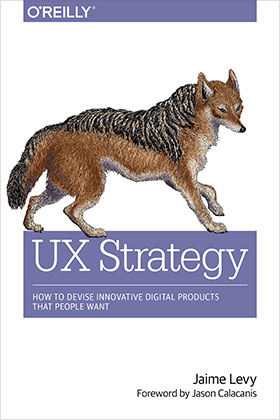As UX professionals, we generally agree that the application of UX principles to strategy pays outsized dividends. But, when I consider the career path for those of us pursuing leadership opportunities, a generalist approach is necessary. For example, for a hypothetical UX researcher who wants to become a leader, producing top-notch research findings, recommendations, and deliverables is not enough. To truly deliver value, the researcher must recognize colleagues’ contributions, appreciate how to work together, and have a firm understanding of how innovation and the commercialization of ideas happens.
The profession of User Experience is a broad one, comprising a diverse collection of professionals with a variety of skills. At a tactical level, the basic outputs for User Experience are fairly well understood and accepted—usability testing, wireframes, prototypes, personas, and such.
However, it is at the boundaries of our profession that we encounter both conflicts and opportunities. One such borderland might be product management—where professionals validate markets, identify monetization opportunities, and make innovation happen.
Now, having read Levy’s book, I would describe UX strategy as product management for UX professionals.
Book Specifications
Title: UX Strategy: How to Devise Innovative Digital Products That People Want
Author: Jaime Levy
Formats: Kindle, Softcover
Publisher: O’Reilly Media
Published: June 1, 2015; 1st edition
Pages: 312
ISBN-10: 1449372864
ISBN-13: 978-1449372866
A Different Kind of UX Book
Levy begins her book with a common story that is likely very familiar to most of us and certainly echoes experiences I’ve had. Some very successful people working in technical fields realized a need in the marketplace and believed they could launch a winning—possibly even disruptive—product. They managed to secure millions of dollars in funding—a feat in itself—conduct research to validate the market need, focus relentlessly on execution and launch their product, establish relationships with channel partners, hire a PR (Public Relations) team, and execute on a multichannel marketing and advertising plan. But after 18 months in operation, not a single customer has bought their product.
So like a death-row inmate who finds religion while being led to the gallows, the product team came to realize that perhaps the user experience was the problem. The product team approached Levy, asking for an immediate redesign of the product’s look and feel. They assumed that this would be an easy job. After all, the product team had already defined and built the product’s feature set. To their credit, Levy’s team declined the job. It was apparent that the product needed not just a new UX design but a user-centered UX strategy.
Rather than describing the psychological underpinnings of usability, various research methods, or new deliverables, UX Strategy provides a roadmap for integrating UX principles with product management and more. It offers a holistic approach to product strategy and confirms that people don’t buy products, but ultimately buy experiences. Understanding that many people have responsibility for delivering a product experience, UX professionals need to provide guidance that only people with UX competencies can offer.
Companies and marketers are often very good at establishing their strategies. That is, they are very good at determining what their goals and objectives are, then executing on them. Even though companies sometimes launch products without UX involvement, they almost never launch without market validation—determining the total addressable market, the serviceable market, and the features they can add to improve competitiveness and increase revenue. However, because of their perspective, they often find it difficult to incorporate the customer’s point of view. Without including the user’s perspective, any success is largely based on luck.
 I must admit that I picked out this book based on its title alone, UX Strategy, which I found intriguing. Plus, the book had high reviews on Amazon. I was curious about what the term UX strategy meant from author Jaime Levy’s perspective. Was it strategy for leading UX teams? Was it applying UX to strategic planning in companies? Something different altogether?
I must admit that I picked out this book based on its title alone, UX Strategy, which I found intriguing. Plus, the book had high reviews on Amazon. I was curious about what the term UX strategy meant from author Jaime Levy’s perspective. Was it strategy for leading UX teams? Was it applying UX to strategic planning in companies? Something different altogether?